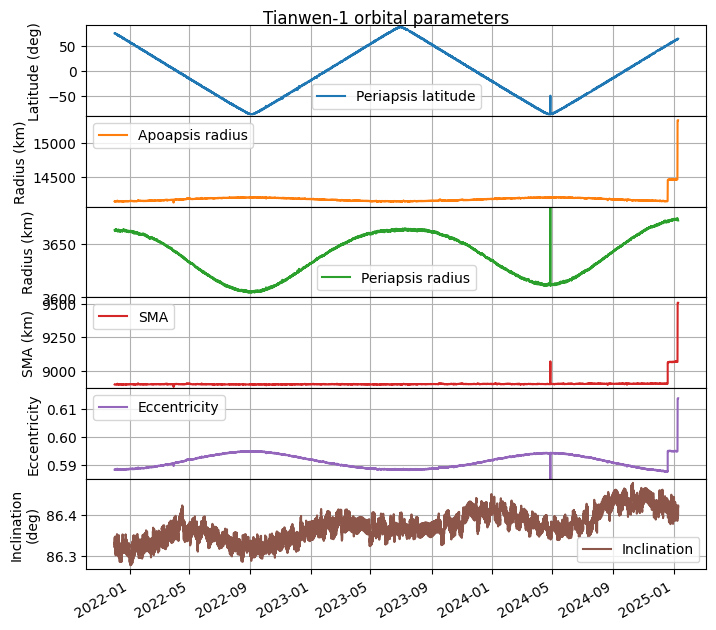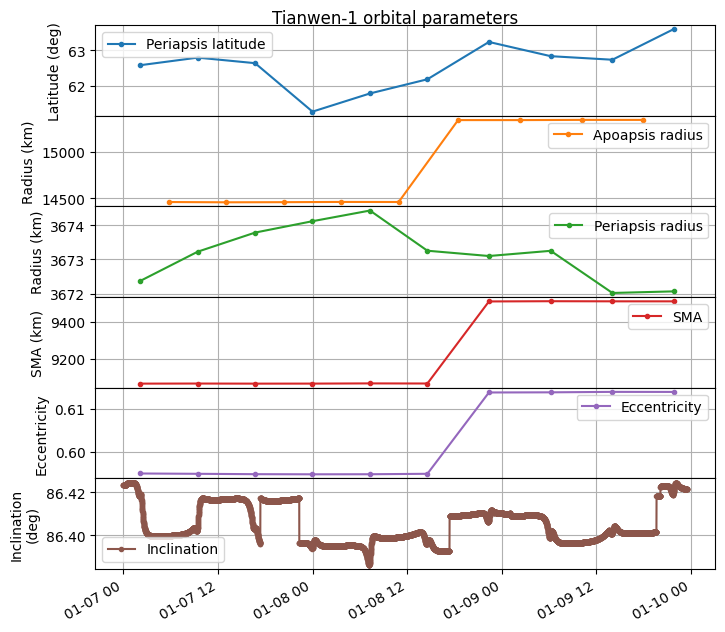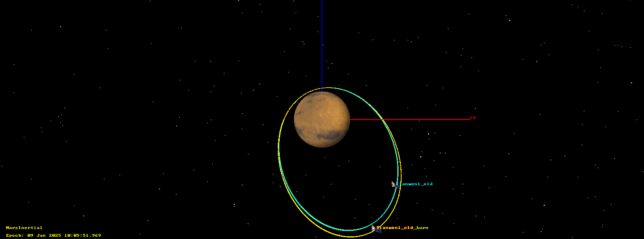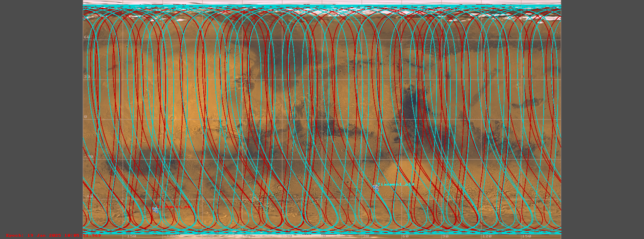Some weeks ago I reported about an apoapsis raise manoeuvre done by Tianwen-1, the Chinese Mars orbiter. This has now happened again. Using state vectors from the telemetry decoded with the 20 m antenna in Bochum observatory by AMSAT-DL, we have detected an apoapsis raise manoeuvre done on 2025-01-08. This new apoapsis raise is much larger than the previous one. I have done the same kind of calculations as in the previous post, and also corrected a bug in my Keplerian elements plots (the periapsis and apoapsis passings were being paired incorrectly, which caused the SMA and eccentricity not to change in the plots I did in the previous post).
The following figure shows the evolution of Tianwen-1 orbital parameters since it entered the remote sensing orbit on 2021-11-08. The two apoapsis raises, with their corresponding changes in SMA and eccentricity can be seen clearly.

Here is a detail of the orbital parameters at the time of the apoapsis raise.

The last state vector decoded before the burn is the following:
2025-01-08 01:27:11.760700 -2394.3082282694545 -1361.4533438264568 -10112.91351233118 1.1625869046741428 0.24521700462086116 -1.4267488773643893
And the first state vector decoded after the burn is:
2025-01-08 17:22:26.113600 2951.865160570536 -68.83247801276006 -14174.997285317439 1.12388398126658 0.3117663006801354 -0.2254873165473251
Using GMAT I have determined that the manoeuvre happened on the periapsis passing at 2025-01-08T14:33:10 UTC. The required delta-V was 25.387 m/s. This is 2.6 times the delta-V used in the previous raise. The following screenshot of GMAT shows the orbit before and after the raise manoeuvre.

The new orbit period is around 28150 seconds. This is close to 7/22 of a Mars sidereal day, which is 28204.27 seconds. However, this might just be a coincidence. This means that after 7 Mars sidereal days the spacecraft has completed 22 orbits and the ground track almost repeats again (but not quite, since the period is off by about 50 seconds, which accumulate to a significant amount over 22 orbits).
As in the previous post, here is a comparison of the ground track before the manoeuvre (cyan) and after it (red). Qualitatively there is not much difference. Despite the large difference in period (the period of the previous orbit was 26210 seconds), both ground tracks cover the surface of Mars in a rather uniform way.

The update Jupyter notebook with the orbit plots is here, and the GMAT script is this one.